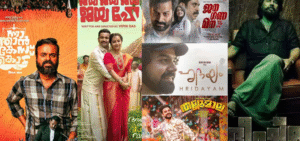Continue With Your Outdoor Shooting Anytime You Want: Photography Institutes Breaking the Rules
‘The early bird gets the best worm’- a saying that every aspiring photographer has heard from his professor and trainer at least once. In a professional photography institute those who are leading outdoor shooting, are always told that the best time to get the finest of photos is either when the sun is rising, or setting. It reflects a stunning sun- kissed light and the photographer would never have to be worried about the light anymore.
If you’re one of those folks who have believed in these golden words, no wonder you have grabbed thousands of golden, sun- kissed looks to your portraiture. The entire period of the golden hour can even make skin tones look magnificent. But if you’re a person who can’t wait for the sun to give you what nature does best, then seriously consider that the best time to take outdoor pictures is any time of the day.
The best thing about outdoor shooting is light. However, we cannot miss mentioning the other things as well-
- When clicking outdoor images, watch the horizon. You may want to pay attention to the position of the horizon; or you can move it lower to include more of the sky. Even raising it to capture more of the foreground in your image is not a bad idea.
- Water can be a beautiful feature in outdoor images, so look for a water body when you shoot. Water adds a touch of beauty and tranquillity to a scene, while creating reflections. People do not get to learn these even in the best photography classes, but with time they learn. So slow down the shutter speed to blur the surface. Incorporating water into your images can help to add that special zing to your landscape shots.
- Along with water, outdoor photography is a great chance to capture some wildlife images. Including wildlife into your photographs with a telephoto lens will allow you to get a close up shot of the animals, without frightening them.
- Shooting toward the sun is never a good idea. Instead try to pay attention to the direction of light and work with it to enhance your images. The best option is to shoot with the sun behind the photographer so the subject gets the maximum light; since it will result in a well-illuminated landscape.
- Never shoot a portrait at less than 50mm; try to stay at 70mm or higher. Any focal length below 70mm can distort your subject; however it doesn’t become very noticeable until you are below 50 MM.
- Plus if you are shooting on a cloudy day, remember that it changes the colour every moment. You do not want you photo to be blurred or filled with little tiny prisms and water droplets, right? Usually getting the source of light right on a cloudy day is difficult because it creates a diffused, illumined and scattered light, making it difficult for the photographer. Your photo may come out as a disaster if you do not keep these things in mind while clicking.
Hope these tips would help you click the right pictures in the outdoors.







